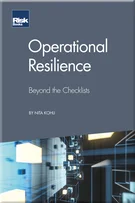Challenges and solutions for retail mortgage portfolios
Joshua Wander
Introduction
An overview of CECL: setting the context
Outlining the most impactful assumptions and challenges under CECL: an auditor’s view
Outlining the most impactful assumptions and challenges under CECL: a banker’s view
A banking industry perspective on key CECL decisions
Challenges and solutions for wholesale portfolios
Challenges and solutions for retail mortgage portfolios
Challenges and solutions for retail credit card portfolios
Challenges and solutions for student loans
Challenges and solutions for securities portfolios
The evolution of purchased loan accounting: from FAS 91 to the CECL transition
Challenges and solutions for qualitative allowance
Challenges and solutions: an auditor’s point of view
Early view of CECL integration into stress testing: practical approaches
Too many cooks in the kitchen: mastering the art of managing CECL volatility
Beyond CECL: rethinking bank transformation
Data collision: efficient lending under CECL
Cutting through the hype: how CECL is impacting investor views of procyclicality, credit analysis and M&A
Concentration risk: the CECL magnifying glass
Closing thoughts
Estimating losses for mortgage loans is challenging even during periods of economic and regulatory stability. The product set itself is among the most diverse of retail loan asset classes: loan sizes can span from less than US$75K to more than US$750K, loan terms range from five years to 40 years, interest rates can be fixed, variable or time-dependent, and though balances most often fully amortise over the life of the loan, other times they do not. Loan balances could be guaranteed in full or part. The collateral supporting the loan could vary by type, size, value or geographic location. The relatively long lives of mortgage loans mean borrower behaviour and collateral values are likely impacted by the interest rate environment, and by both credit and business cycles.
Already one of the most heavily regulated product sets, Accounting Standards Codification (ASC) topic 326: “Financial Instruments — Credit Loss” (ie, CECL) introduced an array of new requirements and complexity to the way financial institutions (FIs) must forecast their allowance for mortgage loan credit losses. Section 20-30-3 of the CECL methodology states: “an entity may use discounted cashflow methods, loss
Copyright Infopro Digital Limited. All rights reserved.
As outlined in our terms and conditions, https://www.infopro-digital.com/terms-and-conditions/subscriptions/ (point 2.4), printing is limited to a single copy.
If you would like to purchase additional rights please email info@risk.net
Copyright Infopro Digital Limited. All rights reserved.
You may share this content using our article tools. As outlined in our terms and conditions, https://www.infopro-digital.com/terms-and-conditions/subscriptions/ (clause 2.4), an Authorised User may only make one copy of the materials for their own personal use. You must also comply with the restrictions in clause 2.5.
If you would like to purchase additional rights please email info@risk.net










